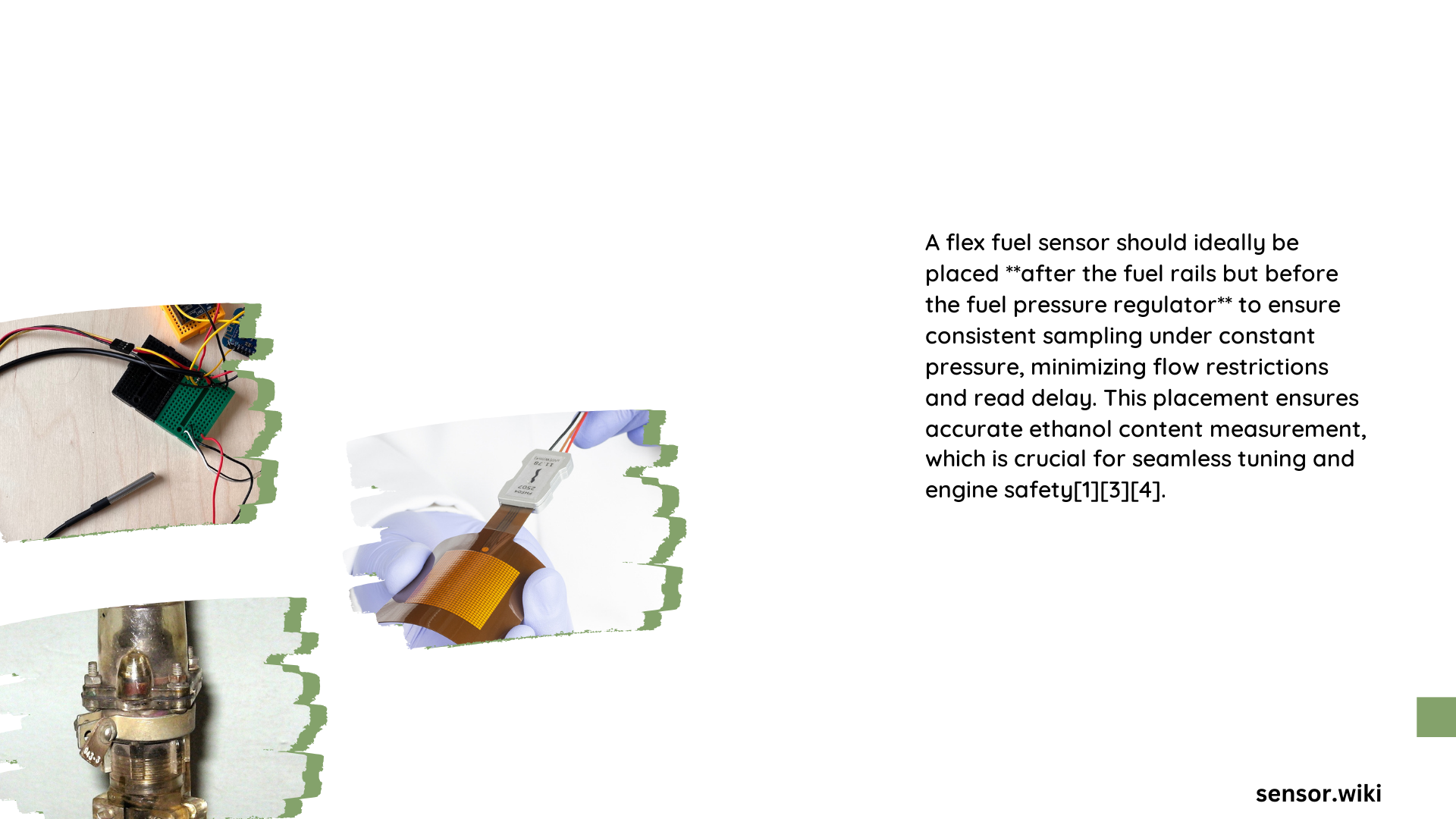A flex fuel sensor is a critical automotive component that enables precise ethanol content measurement and fuel system adaptation. Strategically positioned before or after the fuel pressure regulator, this sensor provides real-time data about fuel composition, allowing modern engine management systems to dynamically adjust fuel trims, ignition timing, and overall engine performance across various ethanol blend percentages.
What Makes Flex Fuel Sensor Placement Critical?
Why Location Matters in Fuel System Configuration?
Flex fuel sensor placement significantly impacts performance and accuracy. Two primary installation strategies exist:
Before Regulator Installation
- Advantages:
- Direct fuel composition measurement
- Minimal system disruption
- Faster response time
After Regulator Installation
- Advantages:
- Reduced potential for fuel system pressure interference
- More stable reading environment
- Lower risk of sensor contamination
| Installation Location | Pressure Range | Response Time | Complexity |
|---|---|---|---|
| Before Regulator | 40-60 PSI | Faster | Moderate |
| After Regulator | 30-50 PSI | Stable | Low |
What Preparation Steps Ensure Successful Sensor Integration?
System Depressurization Protocol
- Locate fuel pump fuse
- Remove fuse from fuse box
- Start vehicle
- Allow engine to run until stalling
- Disconnect battery
How to Select Appropriate Mounting Hardware?
Critical mounting considerations include:
– Vibration resistance
– Temperature tolerance
– Fuel line compatibility
– Electrical connection standards
What Wiring Configurations Guarantee Optimal Performance?
Typical flex fuel sensor wiring requires:
– 12V power supply
– Ground connection
– Signal output to ECU
– Secure, waterproof connections
What Calibration Techniques Maximize Sensor Effectiveness?
Calibration involves:
– Frequency input configuration
– Fuel flow modifier adjustment
– Target air-fuel ratio offset
– ECU-specific programming
What Potential Challenges Might Technicians Encounter?
Common installation challenges include:
– Air bubble prevention
– Precise mounting orientation
– Electrical interference
– Compatibility with specific ECU systems
What Performance Metrics Indicate Successful Installation?
Performance indicators:
– Consistent fuel trim adaptation
– Smooth throttle response
– Accurate ethanol percentage detection
– Minimal engine performance fluctuations
What Maintenance Practices Extend Sensor Longevity?
Recommended maintenance:
– Regular electrical connection inspection
– Periodic calibration verification
– Protection from extreme temperatures
– Avoiding physical damage during service
Conclusion

Successful flex fuel sensor installation requires meticulous planning, precise execution, and comprehensive understanding of automotive fuel systems. Technicians must balance technical expertise with systematic approach to achieve optimal performance.
